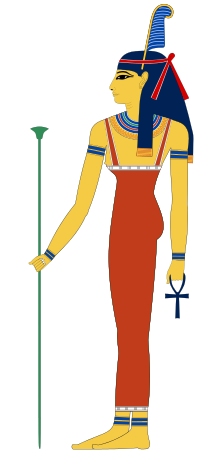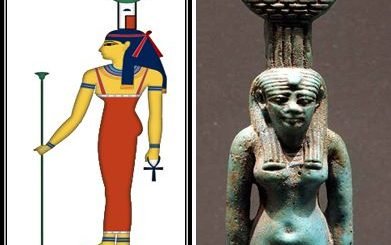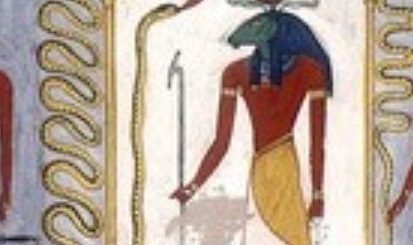Importance of Ma’at in Ancient Egyptian Religion
Ma’at is one of the most significant deities in ancient Egyptian religion and mythology. She embodies the concepts of truth, balance, order, law, morality, and justice.
READ MORE: Most Famous Ancient Egyptian Goddesses

Ma’at depicted with an ostrich feather in her hair
Rather than being associated with legends or episodic myths like many other gods and goddesses, Ma’at represents an overarching principle that was foundational to ancient Egyptian cosmology and daily life.
Nevertheless, she is deeply intertwined with several key myths:
Creation Myth and the Order of the Universe
In ancient Egyptian cosmology, the universe was created from a state of chaos. Once the world was formed, it was Ma’at’s principles of order and balance that kept the forces of chaos at bay and ensured the stable functioning of the world. Her presence allowed the sun god Ra to rise and the Nile to flood, bringing life to Egypt.
READ MORE: 13 Most Famous Creation Myths in World History
Judgment in the Afterlife
Perhaps the most well-known association of Ma’at is with the judgment of souls in the afterlife. When a person died, their heart (considered the seat of the soul) was weighed against the feather of Ma’at in a grand scale.
If the heart was lighter than the feather, indicating a life lived in accordance with Ma’at’s principles, the soul would be granted access to the afterlife. If heavier, the heart would be devoured by the demon Ammit, leading to a second death or non-existence.

A heart that does not balance in the scale of truth (i.e. the scale of Ma’at) was instantly gulped up by the fierce creature Ammit. It means the soul went extinct forever. Image: Ammit and Anubis at the scale of truth (Ma’at)
Daughter of the sun god Ra
In some myths, Ma’at is considered the daughter of Ra, the sun god. As Ra traveled the sky, Ma’at’s principles guided his path, ensuring the balance of night and day and the cycle of life and death.
Ma’at and the Pharaoh
The Pharaoh, as the earthly representative of the gods, had a duty to uphold Ma’at in all actions and decrees. In this context, Ma’at wasn’t just an abstract concept; she was a tangible force that the Pharaoh had to align with. If the Pharaoh governed justly and maintained order, it was believed that Ma’at’s balance would manifest in the form of societal prosperity and natural abundance.
READ MORE: 10 Most Famous Anciente Egyptian Pharaohs
Opposition to Isfet
Isfet is the antithesis of Ma’at, representing chaos, lies, and disorder. The constant struggle between Ma’at and Isfet is a reflection of the ancient Egyptian worldview of balance—between order and chaos, truth and falsehood. This dynamic interplay is present in many myths and is fundamental to understanding the role of deities and kings in ancient Egyptian religion.

While Ma’at might not be the subject of adventurous myths like some other deities, her significance in ancient Egyptian thought can’t be overstated. Her principles permeated every aspect of life, from the grand cosmic order to the daily actions of individuals.



























